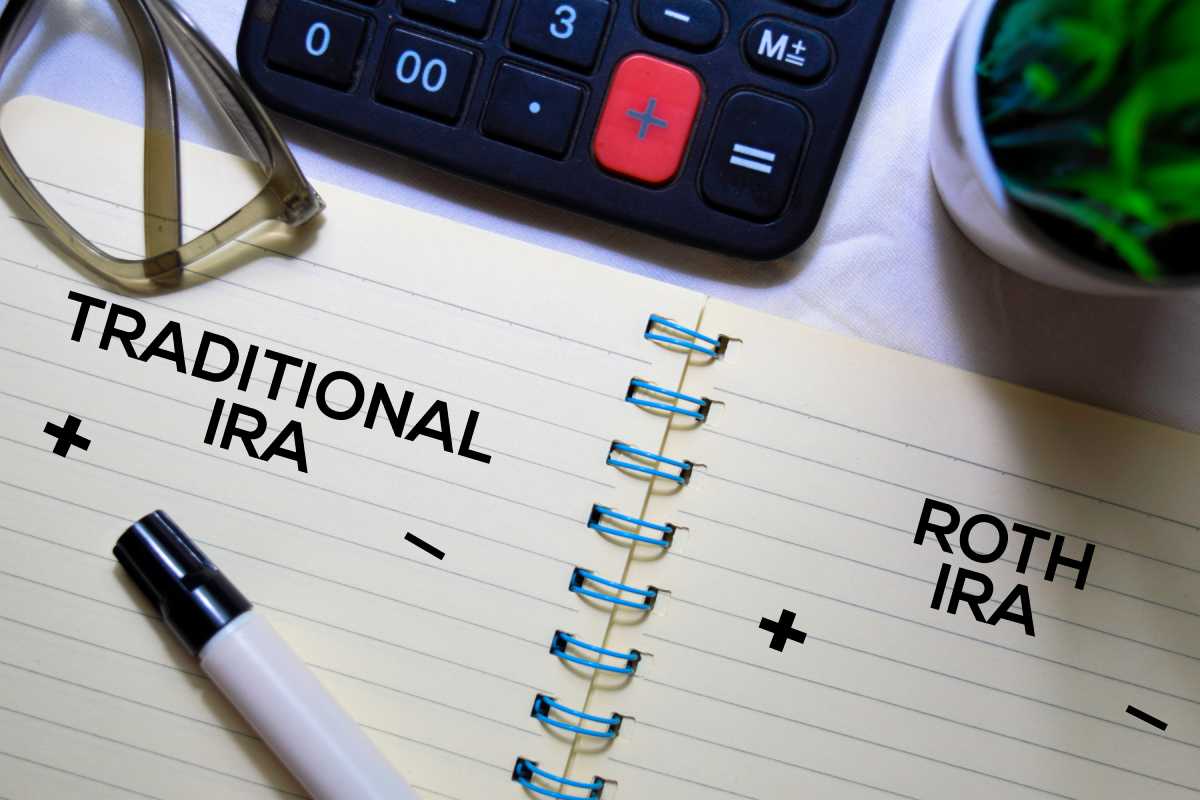
TLDR:
- Convert traditional IRAs to Roths for tax-free future gains.
- Maryland taxes conversion income; county surtaxes raise bills.
- Time conversions in low-income years, watch five-year clocks, pay estimates.
- Avoid penalties by meeting age 59½ and five-year rules; plan partial moves.
- Consider senior tax-credit thresholds and new capital-gain surtax exposure carefully.
Roth conversions can turbo-charge retirement savings, but the rules get tricky once state taxes enter the mix. Below is a practical guide to what is a Roth IRA conversion, how the federal code dovetails with Maryland law, and the exact steps Marylanders must follow to stay compliant—and avoid surprise taxes and penalties.
1. Roth IRA Conversion Basics
Converting an IRA to a Roth means moving money from a traditional IRA (or other pre-tax retirement account) into a Roth IRA account. In the year of conversion, the amount shifted counts as ordinary income, so you’ll be paying income taxes now in exchange for potentially tax- and penalty-free withdrawals later.
Key Federal Rules
- Roth IRA conversion limits: There are no dollar caps on how much you can move, but the income hits your AGI, which could bump you into a higher tax rate and affect Medicare premiums.
- Roth IRA conversion 5 year rule: Each conversion has its own five-year clock; pull converted funds sooner (and before you reach age 59 ½) and you’ll owe a 10 % penalty plus tax on the earnings.
- Roth IRA conversion withdrawal rules: After five years and age 59 ½, converted amounts are tax free withdrawals. Earnings follow Roth contribution rules.
- Required minimum distributions (RMDs): Once money is converted to a Roth, future RMDs on that balance disappear. That’s one reason many retirees accelerate roth conversions before RMD age rises again under SECURE 2.0.
Maryland Matters: State Tax Treatment
Maryland starts with your federal AGI and generally taxes Roth conversions the same way the IRS does—ordinary income in the tax year you convert. County surtaxes push combined rates to roughly 7–9 %. Unlike some states, Maryland does not let you exclude conversion income under its regular $35,000 ($65,000 married) pension-and-annuity subtraction. That break applies only when you receive retirement income, not when you convert.
The 2022 Maryland Retirement Tax Elimination Act began phasing in a non-refundable tax credit (up to $1,500 by 2026) for residents over 65 whose federal AGI is below $100,000 single/$150,000 joint. Because a large conversion can spike AGI, it might wipe out that credit for the year. Plan conversions around those thresholds.
Maryland Fast Facts – Taxes on Roth Conversions
- State income tax brackets run 4.75 %–5.75 %, plus local add-ons of up to 3.2 %.
- Maryland conforms to federal rules—no special rules for Roth IRA conversions—so the gross conversion amount lands on Form 502 line 1.
- Pension-and-annuity subtractions, the senior tax credit, and military-retirement exclusions do not apply to conversion income.
- The new 2025 2 % capital-gain surtax does not touch ordinary-income conversions but can affect investors selling assets to raise cash for the tax bill

Step-by-Step: How to Convert a Traditional IRA in Maryland
1. Crunch the Numbers
Use your expected tax rate (federal + Maryland + county) to estimate the upfront cost. Run partial-conversion scenarios to avoid popping into the 8 % Maryland bracket or losing the senior tax credit.
2. Withhold—or Don’t
IRS rules let you decline withholding on the conversion, but Maryland requires estimated payments if you’ll owe $500+. Paying the tax from outside the retirement account keeps more money growing.
3. Execute the Transfer
Tell your custodian to convert a traditional IRA (or SEP/SIMPLE after two years) to a Roth. Direct trustee-to-trustee moves dodge the 60-day rollover deadline.
4. Track the 5-Year Clocks
Each yearly conversion has its own start date. Mark them so you can avoid taxes on early withdrawals.
5. Report on Your Return
File federal Form 8606 plus Maryland Form 502. If you made any Maryland estimated tax payments, record them on line 26 of Form 502.
Timing Your Conversion: Three Smart Windows
- Gap Years Before Social Security: Lower income means a lower combined tax rate, letting you move more at a discount.
- Market Dips: Converting after a correction moves more shares for the same tax cost, boosting future retirement savings growth.
- Legacy Planning: Heirs inherit a Roth that can continue growing tax- and penalty-free for 10 years, vs. taxable RMDs from an inherited traditional account.
Beware These Maryland-Specific Traps
County Surtaxes
Montgomery and Howard counties top 3 %; Talbot and Worcester sit at 2.25 %. A mid-six-figure conversion could cost an extra $5,000+ in county tax alone.
State Estimated-Tax Penalties
Maryland assesses 0.5 % per month on underpayments. If your conversion taxes will exceed $500, make quarterly estimates via the iFile system or paper voucher PV.
Interaction With Other Maryland Benefits
Large conversions can:
- Reduce itemized-deduction add-back thresholds.
- Eliminate the new senior tax credit.
- Push capital-gain surtax on unrelated sales into effect (AGI over $350 k).
When a Roth Conversion Works—and When It Doesn’t
Conversion Sweet Spots
- Retirees under 63 filling the 12 % federal bracket but expecting higher rates once RMDs kick in.
- Owners of drastically depreciated stock who foresee a rebound.
- Beneficiaries who want to shrink future required minimum distributions RMDs.
Conversion Red Flags
- High-income professionals already at Maryland’s top bracket.
- Seniors depending on Social Security—conversions can make more of the benefit taxable.
- Residents relocating to a no-income-tax state within a year or two.
The Five-Year Rule, Revisited
Remember, there are two five-year clocks:
- One for Roth IRA contributions (starts with your first dollar in any Roth).
- A separate duration for each conversion. Withdraw converted principal before its five-year mark—and before you reach age 59 ½—and the IRS slaps a 10 % penalty plus tax on earnings. Maryland adds its own 10 % penalty for early distributions, matching federal code. These combined hits can exceed 45 % of the amount pulled.
FAQs on Maryland Roth Conversions
Do Maryland retirees still pay state tax on future Roth withdrawals?
No. Once funds meet the age-59 ½ and five-year tests, qualified withdrawals are tax free at both federal and state levels.
Can I re-characterize a 2025 conversion if my income spikes?
Re-characterizations ended in 2017. Instead, use partial conversions or wait for a lower-income year.
Are employer retirement plans like 401(k)s eligible?
Yes—roll 401(k) money into a traditional IRA first, then convert. Check plan rules to avoid violating the “once-per-year” rollover limit.
The Bottom Line
Maryland doesn’t rewrite the federal rules for Roth IRA conversions, but its layered state and county taxes—and new senior credits—turn timing into an art. Model different scenarios, watch AGI thresholds, and keep meticulous records of each conversion’s five-year clock. With careful planning, you can convert a traditional IRA at the lowest practical cost today and enjoy tax free withdrawals for life.
Need help plotting the best strategy? A fiduciary advisor who understands both federal and Maryland code can guide you through every calculation—so you can focus on building a retirement that is truly tax efficient.
Confused by Roth IRA conversion rules? Let our experts guide your conversion strategy.
EIA Income Advisors, Inc. is a registered investment adviser and only conducts business in jurisdictions where it is properly registered, or is excluded or exempted from registration requirements. Registration is not an endorsement of the firm by securities regulators and does not mean the adviser has achieved a specific level of skill or ability. The firm is not engaged in the practice of law or accounting.
We reserve the right to edit blog entries and delete comments that contain offensive or inappropriate language. Comments that potentially violate securities laws and regulations will also be deleted.
The information presented is believed to be factual and up-to-date, but we do not guarantee its accuracy and it should not be regarded as a complete analysis of any topics discussed. All expressions of opinion reflect the judgment of the authors on the date of the post and are subject to change. A professional adviser should be consulted before making any investment decisions. Content should not be viewed as personalized investment advice or as an offer to buy or sell any of the securities discussed.
All investments and strategies have the potential for profit or loss. Different types of investments involve higher and lower levels of risk. There is no guarantee that a specific investment or strategy will be suitable or profitable for an investor’s portfolio. There are no assurances that an investor’s portfolio will match or exceed a specific benchmark.
Historical performance returns for investment indexes and/or categories usually do not deduct transaction and/or custodial charges, or advisory fees, which would decrease historical performance results.
Hyperlinks on this blog are provided as a convenience. We cannot be held responsible for information, services, or products found on websites linked to our posts.
Annuity and life insurance guarantees are subject to the claims-paying ability of the issuing insurance company. If you withdraw money from or surrender your contract within a certain time after investing, the insurance company may assess a surrender charge. Withdrawals may be subject to tax penalties and income taxes. Persons selling annuities and other insurance products receive compensation for these transactions. These commissions are separate and distinct from fees charged for advisory services. Insurance products also contain additional fees and expenses.
Social Security rules and regulations are subject to change at any time. Always consult with your local Social Security office before acting upon any information provided herein.
Tax and legal information contained in this publication is general in nature and should not be relied upon as tax or legal advice. Always consult an attorney or tax professional regarding your specific legal or tax situation. Tax and pension rules are subject to change at any time.





